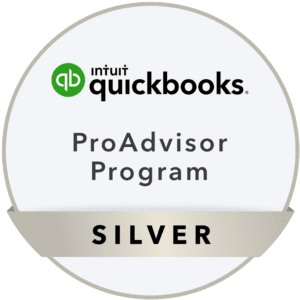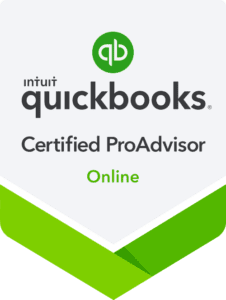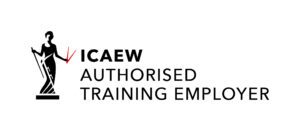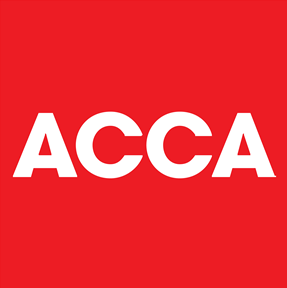Directors' pension
Like this page? Share it with your friends
Facebook
Twitter
LinkedIn
WhatsApp
Email
Print
Table of Contents
Overview of Directors’ pension
Directors’ pension or company pension contribution for directors has always been a neglected area under tax planning and income building for retirement, particularly for small and “Owner managed business” directors. Whilst many directors appreciate that saving in a pension is a tax efficient way of building up an income for retirement, they still struggle to take timely decisions. This is because there is an awful lot to absorb to get the grips of pension, particularly in terms of personal pension, workplace pension, pension drawdown, annuities and much more.
Before we dive down into the specific details of pension for directors of limited company, let’s have a brief understanding of “personal pension” and “Company (workplace) pension” in order to cover the overlap information;
How do Personal pensions work?
If you have set up a personal pension scheme, you would make contributions into your pension pot from the income which has already been taxed. This means if you contribute £100 into your personal pension scheme, you would have already paid £25 of tax on such “net” income if you are a basic rate taxpayer or £66.67 of tax if you are a higher rate taxpayer. Consequently, on a personal pension contribution of £100, taxman will add the basic rate tax relief of £25. If you are a higher/advanced rate taxpayer, you can also claim additional tax relief through your personal self-assessment tax return.
How do Company (Workplace) pensions work?
Workplace pension work slightly differently from personal pension scheme. Usually, there are 2 components of contributions i-e employee’s contribution and employer’s contribution. Employee’s contribution is paid directly into the pension pot and tax relief is obtained in 1 of the 2 ways i-e either by “Relief at source arrangement” or by “Net pay arrangement”. These will be discussed in further details in a separate article.
What is the maximum amount of pension I can put in pension each year?
You can top up your pension pot without any restriction whatsoever every year. However, be mindful of the fact that the precise purpose of building up your pension pot is to secure your retirement income “tax efficiently”. If your pension contributions lose this important feature of tax efficiency, you would probably be better off exploring other savings/investments options. So, you must ensure that all contributions into your pension pot (be it your personal or employers) are tax free. You can get tax relief on every penny you contribute, up to 100% of your “annual relevant earnings”, with an upper limit of £40,000 (known as your annual allowance). Annual pension allowance of £40,000 must include all 3 elements of your pension pot i-e your personal contribution, your employer contribution and government’s tax relief.
If you earn in excess of £200,000 a “Tapered Allowance” will be applicable. This will be discussed in detail in a separate article.
If you do not earn at all in the tax year or your earnings were less than £3,600 you would still be eligible for tax relief on £3,600 gross contributions. This would include your maximum contribution of £2,880 and tax relief of £720.
What are Relevant earnings for pension purpose?
‘Relevant earnings’ for pension purpose include;
- employment income (wages, bonus, commission, overtime, benefits in kind)
- trading income
- Furnished holiday lettings
- Patent income in relation to inventions.
Be advised, dividends drawn from your company are not considered as your “Relevant earnings” for pension purpose. The above list is not exhaustive. See HMRC Pensions Tax Manual for further details.
Is Pension Allowance per person or per pension?
The Annual pension allowance of £40,000 is per person and not per pension scheme. If you have more than 1 pension schemes set up, your total contribution across all schemes must not exceed the Annual Pension Allowance, in order to claim tax relief. However, if you intend to make a large contribution into your pension pot, you can carry forward any unused allowances during the previous 3 tax years. Assuming you have not made any pension contributions in the past 3 years, you can claim tax relief on carry forward allowances of £120,000 in addition to current year’s Pension allowance of £40,000.
What if my pension contributions exceed Annual Pension Allowance?
If your pension contributions exceed Annual pension allowance even after carrying forward your Pension allowance from last 3 tax years, they will be subject to “Annual allowance charge” in line with Income tax rates. Any excess contribution will be added on to your total taxable income and your personal tax liability will then be calculated accordingly.
What is Lifetime pension allowance?
Lifetime pension allowance is in addition to the Annual Pension allowance and your lifetime pension pot must be within this limit in order to claim tax relief. Presently, the lifetime allowance is capped at £1,073,100, however it is set to increase in the coming years.
If your contributions exceed the lifetime pension allowance, you will be subject to an immediate tax whenever you take the excess benefits from your pension. 25% will be charged if paid as a pension or 55% if paid as a lump sum, plus income tax at your standard rate.
How can I draw my pension?
Presently, you can draw from your pension pot once you reach 55 years of age or over. However, this age limit is set to increase to 57 years from tax year 2028. At this age, you would have many options including drawdown (withdrawal), annuity, combination of both etc.
25% of your pension pot will usually be available as tax free withdrawal, depending on your pension scheme conditions. If you want to draw more than 25%, income tax will be charged on the excess at your highest tax rate i-e 20%, 40% or 45% if you are basic rate taxpayer, higher rate taxpayer or advanced rate taxpayer respectively.
What are my options for pension as director of a company?
If you are a director of your own limited company, you have more flexibility or control over your pension, as you have couple of options;
- Personal pension contributions as company director
- Employer (Company) pension contributions
Company director’s Personal pension contributions
If you, as a company director of your small company, opt for personal pension contribution route, you may be caught under the “Relevant Earnings” rule, where your maximum tax-free contributions cannot exceed 100% of your “Relevant earnings”. Remember, the Relevant earnings only include wages and not dividends, as explained above. If you are amongst majority of small company directors who take small wages large dividends, then your tax-free pension contributions will be quite low i-e limited to wages only. If you exceed this limit, you will subject to Pension tax charge, as explained above.
Should you wish to increase your tax-free pension contributions under personal pension route, you will have to increase your wages. The tax implications of this strategy will be higher amount of PAYE tax and National insurance along with corporation tax savings on increased wages.
Alternatively, you can explore making pension contributions directly from your company as employer contribution.
Company director’s Employer (Company) pension contributions
If you make Employers pension contributions as director, Relevant UK earnings (i-e wages only) will not be applicable and your company can make tax-free pension contributions up to the Annual allowance limit of £40,000. (This limit includes your personal contribution and tax relief).
Your limited company can make pension contributions from pre-taxed company income to your (director’s) pension pot. Such employer’s contribution will be treated as an allowable (tax deductible) business expense. So, your company will receive tax relief against corporation tax at 19% on the pension contributions.
By making pension contribution via your company, you can also save 13.8% national insurance as companies (employers) do not have to pay National Insurance on pension contributions.
Combining the above 2 tax and NI savings, you as company director and your company as employer can save up to 32.8% by making pension contributions directly into your pension pot.
Despite a solid tax savings of 32.8% on paper, making pension contributions directly from your company may or may not be tax efficient in totality. You must seek professional advice based on your personal circumstances regarding the best possible customized solution.
What are HMRC rules for director’s pension via company?
Company’s pension contributions into director’s pension pot must abide by the following rules for allowable deductions.
- Director’s contribution limit: The total sum you contribute should not exceed your business’s annual income, as this is likely to be flagged by HMRC and could result in them raising questions surrounding whether the funds have actually been generated from your company.
- Business logic test: pension contributions should be ‘wholly and exclusively’ for the purposes of business. HMRC may be interested in verifying this, should they spot any suspicious activity. To verify this, HMRC may look into other employees’ remuneration and contributions packages for comparison.
Our service to you
If you are a self employed, business owner/director of company looking to get your accountancy and taxation matters sorted, look no further. We are pro-active and easily accessible accountants and tax advisors, who will not only ensure that all your filing obligations are up to date with Companies House and HMRC, but also you do not pay a penny more in taxes than you have to. We work on a fixed fee basis and provide same day response to all your phone and email enquiries. We will also allocate a designated accounts manager who would have better understanding of your and business financial and taxation affairs. Book a free consultation call using the link below.
Related pages:
Get further information from the following pages;
Subscribe to our newsletter
BUSINESS HOURS
Monday – Friday
- 9:00 am – 5:30 pm
Pages:
Menu








